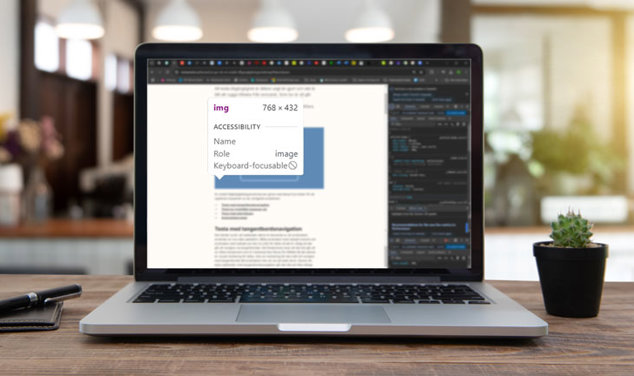Measuring accessibility
We often audit accessibility for organizations that need to know what accessibility improvements are required by law or needed in order to offer better service and reach a larger audience.
These audits focus on the digital services (websites, apps, documents and content in social media). They are an efficient way to find problems, that can often be easily fixed. But they do not show the overall status of accessibility in the organization.
Often, we combine the audits with education and other efforts intended to increase the ability of the organization to improve and maintain digital accessibility.




